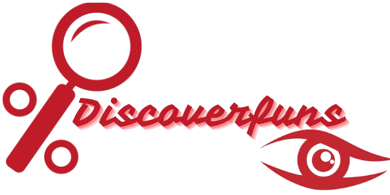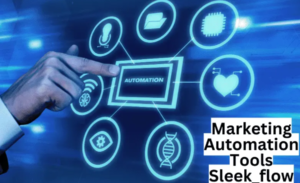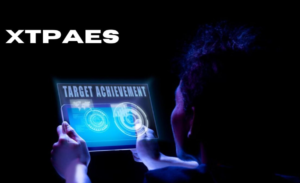Unlocking Security: The Power And Potential Of XTPAES In Modern Encryption
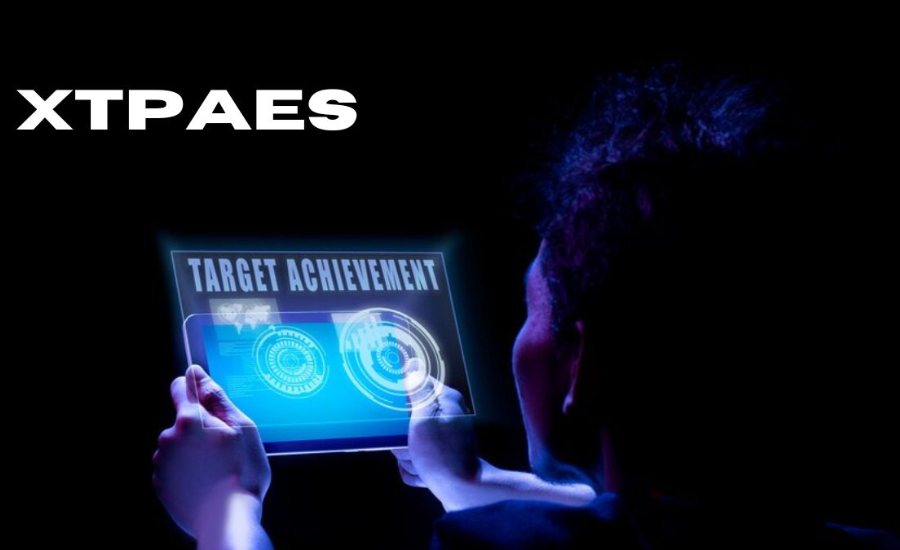
Embark on a journey into the future of technology with Xtpaes, a transformative innovation poised to redefine digital landscapes. Xtpaes is more than a mere technological advancement—it acts as a driver of meaningful change. By seamlessly integrating advanced systems, Xtpaes creates a unified and efficient digital ecosystem. Its ability to evolve in response to shifting demands ensures it remains both effective and relevant. Designed with a focus on enhancing the user experience, Xtpaes emphasizes a people-centered approach, optimizing interaction and satisfaction. Its wide-ranging applications, from healthcare to education, underline its adaptability across multiple industries. Ultimately, Xtpaes sets a new benchmark for digital transformation, offering greater efficiency and significantly improved user experiences.
What Is XTPAES?
XTPAES, which stands for eXtensible Tiny Encryption Algorithm with Ciphertext Stealing, represents a breakthrough in encryption technology designed to significantly enhance data security. It is a more advanced form of encryption, built to safeguard sensitive information better than existing systems. In a world where data breaches are becoming increasingly sophisticated, XTPAES provides an extra layer of protection, making it a powerful tool for individuals and organizations alike.
How XTPAES Improves Upon Traditional AES Encryption
You may already be familiar with AES (Advanced Encryption Standard), a widely-used encryption method that has been the foundation of data protection for many years. While AES is still strong, XTPAES introduces additional innovations that elevate its security capabilities. Think of AES as a reliable lock that secures your data. XTPAES takes this one step further by adding extra layers—like a lock with multiple bolts—that make it even more difficult for unauthorized parties to break through.
But XTPAES isn’t just a minor improvement—it’s a substantial upgrade. It incorporates advanced cryptographic algorithms that are specifically designed to address modern cybersecurity challenges. In an era of ever-evolving threats, XTPAES offers a forward-thinking solution, making it particularly well-suited for high-risk environments, such as financial institutions, healthcare organizations, and large enterprises dealing with vast amounts of sensitive information.
Why XTPAES Is Important

So why should you care about XTPAES? The answer lies in the level of protection it provides. In a digital age where personal, financial, and corporate data is constantly under threat, XTPAES offers a robust security mechanism that ensures even if hackers manage to access your data, they cannot decipher it. This encryption technology safeguards everything from personal details to confidential business information, providing peace of mind in an increasingly volatile cybersecurity landscape.
Moreover, XTPAES is designed to be future-proof, meaning that it is capable of defending against not only today’s security threats but also those anticipated in the near future. Its flexibility and adaptability make it a long-term solution for organizations that need to stay ahead of cybercriminals. In short, XTPAES represents a revolutionary advancement in encryption technology. It’s stronger, more sophisticated, and ready to face even the most complex security challenges head-on.
Core Principles Of Xtpaes
At its foundation, Xtpaes operates through seamless integration with evolving technologies, positioning itself as a dynamic and adaptable system. The adaptability of Xtpaes is key, allowing it to evolve alongside technological advancements and changing user needs. A central pillar of its design is its human-centric approach, ensuring that the technology is not only functional but also enhances the overall user experience. By integrating modern innovations such as Artificial Intelligence (AI), the Internet of Things (IoT), and blockchain, Xtpaes takes a comprehensive approach that fosters efficient and forward-thinking ecosystems.
Xtpaes places a strong emphasis on scalability, meaning its solutions can grow and expand in tandem with ongoing technological advancements. This scalability ensures that Xtpaes can meet the demands of diverse industries, making it versatile and future-proof. Collaboration between humans and machines is another core principle, enhancing productivity and elevating satisfaction for end-users through efficient interactions. Furthermore, the principles of transparency and security are deeply embedded within Xtpaes, particularly in protecting data within decentralized systems. The emphasis on safeguarding data privacy is crucial in today’s digital world, where trust is paramount.
Ultimately, Xtpaes stands as a transformative force in the technological landscape, not only enabling innovation but also setting new standards for how technology should integrate with both human needs and business demands.
Business Advantages Of Xtpaes
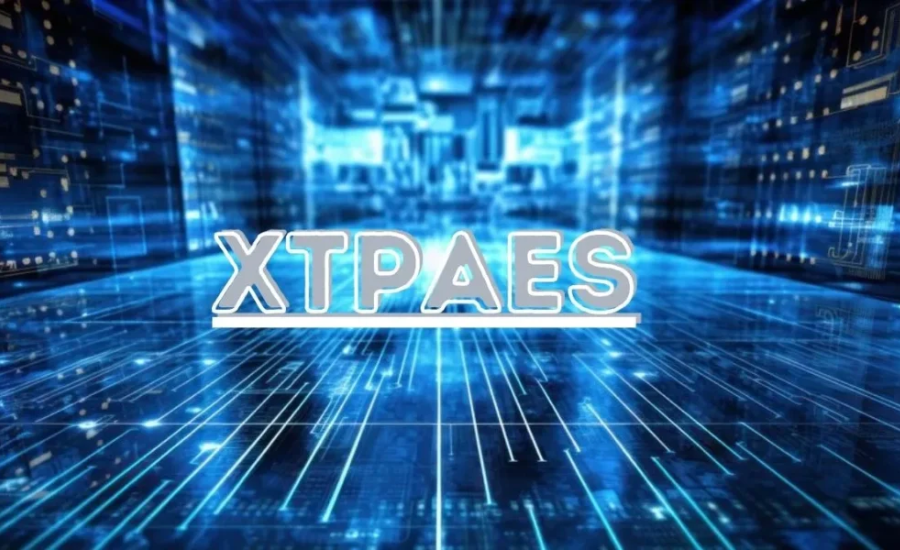
To fully understand the business advantages offered by Xtpaes, it’s important to consider its far-reaching transformative effects. One of the primary benefits is its ability to integrate seamlessly across various operations. This integration enhances operational efficiency, allowing businesses to operate more smoothly and with greater agility. Xtpaes also empowers organizations by delivering real-time data insights, enabling informed, strategic decision-making based on accurate and up-to-date information. This responsiveness is crucial for businesses looking to stay ahead in competitive markets.
Xtpaes also drives innovation within companies. Through its adaptive technologies, businesses can remain at the forefront of technological advancements, ensuring they are not left behind as industries evolve. It plays a vital role in optimizing resource allocation, which not only reduces operational costs but also enhances overall performance. Xtpaes’ ability to manage resources more efficiently leads to cost savings while maintaining high productivity levels.
A major advantage of Xtpaes is its focus on sustainability. In a world where environmental issues are becoming central to business operations, Xtpaes aligns its technology with environmentally responsible practices. By promoting energy-efficient operations and sustainable resource management, businesses can achieve their green goals while maintaining profitability.
Finally, Xtpaes fosters a customer-centric approach by enhancing user satisfaction and loyalty. By improving the overall experience for customers, businesses can strengthen their relationships and build long-term trust. In summary, Xtpaes offers a multi-dimensional set of advantages that helps businesses innovate, cut costs, boost sustainability, and improve customer engagement, driving sustainable growth and competitive advantage.
Applications Of XTPAES In Various Industries
Healthcare
The healthcare sector is increasingly reliant on advanced technologies to improve patient care, streamline operations, and protect sensitive information. XTPAES plays a pivotal role in transforming how medical data is handled, treatments are optimized, and administrative processes are managed, bringing about significant improvements across the industry.
Patient Data Management
XTPAES offers a robust solution for the management of patient data, ensuring that medical records are stored securely, updated in real-time, and made accessible to authorized healthcare professionals. By leveraging XTPAES, healthcare providers can enhance the accuracy of patient records, reducing the risks of errors and miscommunication. This is particularly crucial in environments where patient information needs to be shared quickly and securely between departments or across different medical facilities. With XTPAES, the encryption of sensitive data ensures that patient confidentiality is maintained, even as digital health records become more widely used and shared.
Treatment Optimization
Beyond data management, XTPAES contributes to the improvement of patient outcomes by facilitating the analysis of vast amounts of medical information. Healthcare professionals can use XTPAES to analyze patient histories, genetic information, and real-time health data, which helps in identifying the most effective treatment plans for individuals. This personalized approach to healthcare is crucial in enhancing patient outcomes, as it allows doctors and specialists to make data-driven decisions, tailoring treatments to each patient’s unique needs. By streamlining the process of data analysis and encryption, XTPAES ensures that medical staff can focus on delivering high-quality care without compromising data security.
Administrative Efficiency
One of the significant challenges in the healthcare industry is managing the extensive administrative tasks that often slow down operations. XTPAES addresses this challenge by automating critical tasks such as patient scheduling, billing, and insurance claim processing. With XTPAES, healthcare providers can reduce the administrative burden on staff, allowing them to dedicate more time to patient care and other essential duties. This automation not only increases efficiency but also minimizes the risk of human error in tasks that involve sensitive information and complex processes. By simplifying administrative workflows, XTPAES contributes to a smoother, more efficient healthcare system where resources are better allocated, and operational costs are reduced.
Technical Breakdown Of XTPAES
XTPAES, known as the eXtensible Tiny Encryption Algorithm with Ciphertext Stealing, represents a significant advancement in encryption technology. Its primary goal is to enhance the security framework provided by AES (Advanced Encryption Standard), adding new layers of protection to withstand modern cyber threats.
At the heart of XTPAES is symmetric key encryption, meaning the same key is utilized for both the encryption and decryption processes, as is the case with AES. However, what sets XTPAES apart is its implementation of a technique called ciphertext stealing. This method allows for the encryption of plaintext blocks, even those that are not of a standard size, without the need for padding. This capability optimizes the encryption process, reducing the data expansion that typically occurs during encryption and making the overall system more efficient.
Ciphertext stealing is especially valuable in applications where data sizes vary, as it ensures that every piece of data, regardless of its size, can be encrypted securely without unnecessary padding. This reduces the potential vulnerabilities associated with padding schemes and enhances the performance of the encryption system.
Comparing XTPAES With AES: Key Similarities And Differences

To better understand how XTPAES improves upon traditional AES, we can examine both the similarities and the enhancements XTPAES introduces. Both XTPAES and AES operate on the principles of block cipher encryption, utilizing a fixed-size block of data during the encryption process. AES typically works with a block size of 128 bits, making it a standard encryption method for secure communication.
XTPAES, however, expands on this by allowing for variable block sizes, providing greater flexibility. This adaptability allows XTPAES to handle diverse data types and different encryption requirements more effectively. Whether dealing with large files or smaller, fragmented data sets, XTPAES can encrypt more efficiently, ensuring a consistent level of security without being limited by rigid block sizes.
A major distinction between AES and XTPAES is the way they approach confusion and diffusion within the encryption process. These concepts are crucial to making encrypted data difficult to break.
- Confusion refers to making the relationship between the encryption key and the ciphertext as complex as possible, ensuring that altering even a single bit of the key drastically changes the output.
- Diffusion involves spreading the redundancy of the plaintext across the ciphertext to ensure that the impact of a single change in the plaintext is distributed across the entire encrypted message.
While AES has been designed with robust confusion and diffusion processes, XTPAES takes these principles a step further. By incorporating more complex algorithms and methods, XTPAES enhances both confusion and diffusion, making it even harder for attackers to decipher the encryption or establish any clear patterns from the ciphertext.
Additionally, XTPAES offers superior protection against known attack vectors that have threatened AES in the past. By integrating stronger methods for scrambling and distributing data, XTPAES addresses potential weaknesses, providing a level of encryption that is much harder to breach.
Expanding Security Capabilities With XTPAES
XTPAES also introduces a more dynamic approach to encryption, catering to the evolving landscape of data protection. As the nature of data continues to change with the rise of cloud computing, IoT devices, and decentralized systems, encryption techniques must adapt. XTPAES is well-suited for these modern environments, offering flexibility and adaptability that traditional encryption methods might lack.
For instance, XTPAES can handle diverse encryption tasks, from securing communications in distributed networks to safeguarding sensitive data in high-performance computing environments. Its ability to operate with various block sizes and its advanced encryption process makes it a versatile tool for protecting critical information, regardless of the industry or application.
Challenges And Considerations With XTPAES
While XTPAES provides advanced encryption capabilities, it comes with certain challenges that need to be addressed for optimal performance and security.
Performance Overhead
One of the primary considerations when implementing XTPAES is the potential performance overhead it may introduce. The algorithm’s enhanced security features, such as its ability to handle variable block sizes and incorporate ciphertext stealing, while beneficial in terms of data protection, can result in increased computational demands. This is particularly noticeable when large amounts of data are being encrypted or decrypted. The processing power required to manage complex encryption methods can slow down system performance, especially in environments where real-time data processing is crucial.
Organizations must assess the trade-off between enhanced security and performance. In cases where performance is a top priority, it may be necessary to implement optimizations that can alleviate some of the computational load. For instance, leveraging hardware acceleration, optimizing the encryption workflow, or scaling up infrastructure can help balance the performance impact without compromising the robustness of the encryption.
In addition, it is vital to monitor how XTPAES scales with growing data demands. As businesses accumulate larger volumes of information, encryption methods must be able to handle this growth efficiently. Therefore, organizations should periodically reassess system performance and make adjustments to ensure the encryption process remains both secure and efficient.
Key Management
Another critical aspect of using XTPAES effectively is key management. Encryption is only as secure as the methods used to manage and protect the cryptographic keys. In the case of XTPAES, this involves several layers of key management, all of which need to be meticulously handled to prevent unauthorized access or data breaches.
Key management encompasses various activities, including:
- Key generation: Generating strong, unique encryption keys to safeguard data.
- Key storage: Ensuring that keys are stored in secure, encrypted environments to prevent unauthorized access.
- Key distribution: Distributing encryption keys securely, making sure they reach authorized users or systems without interception.
- Key rotation: Regularly updating encryption keys to reduce the risk of compromised keys being exploited.
- Key revocation: Promptly revoking keys when necessary, such as when an employee leaves the organization or when a key is suspected of being compromised.
Therefore, organizations must invest in tools and processes that automate and securely handle these key management tasks. Additionally, implementing multi-factor authentication and role-based access controls for key access can further protect the encryption framework.
To enhance security, businesses should also consider adopting cryptographic key management systems (KMS), which offer centralized and automated control over key lifecycle management. These systems ensure that best practices are followed consistently, reducing human error and improving overall security.
Innovations In Healthcare Through Xtpaes

The healthcare sector is undergoing rapid transformation, with technological innovations driving significant advancements in patient care. Xtpaes plays a critical role in this evolution, helping integrate these groundbreaking technologies into the healthcare ecosystem. From AI-assisted medical procedures to next-generation telehealth systems, Xtpaes contributes to reshaping the entire healthcare landscape by offering enhanced security, adaptability, and efficiency in managing healthcare data and systems.
Robotic-Assisted Surgeries and AI-Driven Diagnostics
One of the most profound innovations is the integration of robotic systems in surgeries. These robotic systems, supported by Xtpaes-encrypted data frameworks, allow surgeons to perform precise, minimally invasive procedures with improved accuracy and recovery times. AI-driven diagnostics further enhance the ability to analyze medical data, offering quicker and more accurate disease detection. Xtpaes ensures that the sensitive data being processed and shared by these advanced technologies remain secure, safeguarding patient privacy while enabling more effective treatments.
Telemedicine and Remote Patient Care
The rise of telemedicine has revolutionized how healthcare is delivered, especially in underserved or remote areas. Xtpaes helps secure the vast amounts of data generated through these platforms, ensuring that patient-doctor communications remain private and protected from breaches. Telemedicine platforms, powered by Xtpaes, enable patients to consult healthcare providers from anywhere, reducing geographical barriers and making healthcare more accessible and convenient. Xtpaes’ encryption standards ensure that medical data, including diagnostic images and test results, are transmitted securely, fostering trust between patients and providers.
Prosthetic Advancements through Biomedical Engineering
Biomedical engineering continues to make strides in prosthetics, enabling patients with limb loss or mobility challenges to regain movement and functionality. Xtpaes helps in securely managing the intricate data used in designing and customizing these prosthetics. This ensures that the personal and health information required to create patient-specific solutions is protected. These innovations, driven by biomedical advances, have a direct impact on improving the quality of life for individuals through personalized, data-driven solutions.
Gene Editing and Personalized Medicine
Gene editing technologies, such as CRISPR, are opening up new avenues in personalized medicine, offering targeted treatments for genetic disorders. Xtpaes plays a pivotal role in ensuring the secure storage and transmission of the highly sensitive genetic information involved in these processes. With the ability to create treatments that are tailored to the individual’s genetic makeup, healthcare is moving toward more precise and effective medical interventions. Xtpaes ensures the protection of genetic data from unauthorized access, providing a secure foundation for further advancements in this field.
Wearable Health Monitors and Real-Time Health Tracking
Wearable health technology has become increasingly popular, with devices that can monitor heart rate, blood pressure, and even glucose levels in real-time. Xtpaes enables secure data transmission from these devices to healthcare providers, ensuring that the collected health data is kept private and protected. This real-time monitoring empowers patients to manage their health more proactively, and healthcare providers can make timely interventions when necessary. Xtpaes safeguards the continuous flow of personal health data, ensuring that users can trust the technology that monitors their well-being.
Nanotechnology for Targeted Drug Delivery
Nanotechnology is showing promise in revolutionizing drug delivery systems by enabling medication to be delivered precisely to the affected areas, reducing side effects and improving efficacy. Xtpaes contributes to the secure handling of the data involved in designing these drug delivery systems. The technology allows for precise control over the delivery of medication, and Xtpaes ensures that the sensitive information used in these processes is kept secure, supporting the continued development of nanomedicine solutions that enhance patient care.
These innovations, supported by the advanced security and data management capabilities of Xtpaes, are redefining healthcare delivery. The emphasis on precision, efficiency, and patient-centered care is shaping the future of medical treatment.
How To Implement XTPAES Encryption
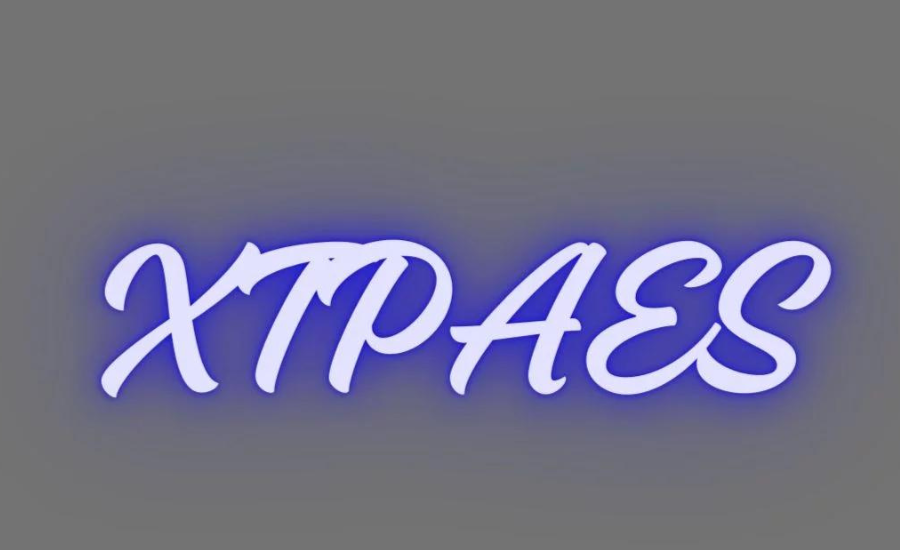
Implementing XTPAES encryption within an organization is a process that requires careful planning and execution. By following these key steps, IT professionals can ensure a smooth and secure integration of XTPAES into their systems.
1. Evaluate Encryption Requirements
The first step is to assess which data needs encryption. Identify sensitive information such as financial records, personal data, or proprietary business information that requires additional security. Analyze the volume and type of data to determine the most suitable encryption settings for your specific requirements.
2. Select Suitable Tools and Libraries
Once the data has been evaluated, it’s important to choose the right encryption tools. Look for software or encryption libraries that are compatible with XTPAES. Some libraries, like OpenSSL, may have plugins or extensions for XTPAES, allowing you to implement this encryption method efficiently. Ensure that the tools you select are reliable and well-suited to your organization’s infrastructure.
3. Incorporate XTPAES into Existing Systems
Next, integrate XTPAES into your organization’s current systems. This will involve updating the existing encryption protocols and embedding the new XTPAES process. It’s essential to ensure compatibility between XTPAES and your current software environment to avoid disruptions in workflows or operations. A phased implementation may be ideal to prevent any potential issues during the transition.
4. Perform Extensive Testing
Before deploying XTPAES organization-wide, conduct comprehensive testing. Encrypt and decrypt sample datasets to verify that the encryption is functioning as expected without any data loss or corruption. Testing will help identify any technical challenges, allowing you to make adjustments before full-scale deployment.
5. Train Your IT Team
To ensure the long-term success of XTPAES implementation, train your IT staff on the new encryption standards. This training should cover how to use XTPAES, best practices for maintaining encryption protocols, and troubleshooting techniques. A well-informed team will be able to manage and optimize the encryption process effectively, ensuring data security remains a top priority.
Case Studies: Successful Implementations Of XTPAES Encryption

Real-World Success Stories of XTPAES Deployment
XTPAES has proven its efficiency and reliability in various real-world scenarios, demonstrating how it can enhance data security across different sectors.
A notable instance involves a leading global financial institution that faced escalating risks associated with cyberattacks targeting its online banking operations. To address the pressing need to protect millions of daily transactions, the institution implemented XTPAES to bolster its encryption measures. This strategic move resulted in a marked decrease in data breaches and cyber threats. As a consequence, customers experienced heightened security, fostering increased trust and confidence in the banking platform.
Another notable case is a large healthcare organization, where patient privacy is critical. They integrated XTPAES to secure sensitive health information, including medical records and communications between healthcare professionals. By doing so, the provider ensured compliance with strict health data protection regulations and enhanced its security framework, reducing the risk of data leaks and unauthorized access to patient information.
Outcome Analysis
In the financial sector, the implementation of XTPAES brought a tangible improvement in system security. The institution saw a sharp decline in attempted cyber intrusions, and the enhanced encryption made it far more difficult for unauthorized entities to compromise the platform. This heightened level of security directly contributed to higher customer satisfaction and trust.
For the healthcare provider, XTPAES enabled the encryption of large volumes of patient data without disrupting their existing systems. The integration was seamless, and healthcare staff found it easy to work with the new encryption standards. Most importantly, the confidentiality of patient data was preserved, showcasing XTPAES’s effectiveness in protecting sensitive information while ensuring compliance with regulatory standards.
Future Trends And Developments In Xtpaes

As Xtpaes continues to evolve, the future promises significant advancements in its applications across multiple industries. Emerging technologies such as artificial intelligence (AI), the Internet of Things (IoT), and blockchain will play crucial roles in shaping the next phase of Xtpaes development. These advancements will enhance Xtpaes’ ability to integrate seamlessly into various sectors, providing more intelligent and interconnected systems.
AI and IoT Integration
Looking forward, AI and IoT will significantly influence how Xtpaes is used. AI-driven systems will require more robust data security solutions as they handle increasingly complex and sensitive data. Xtpaes is well-positioned to meet this challenge, offering the encryption tools needed to protect AI algorithms and the data they process. The interconnectedness enabled by IoT will also rely on Xtpaes for secure communication between devices, ensuring that data transferred across networks remains safe from malicious attacks.
Sustainability and Scalability
Sustainability will be a key focus as the future of Xtpaes unfolds. With a growing emphasis on eco-friendly technologies, Xtpaes can contribute to more efficient and sustainable digital processes by optimizing resource management in energy-consuming systems. Moreover, scalability will be essential as industries expand and require encryption solutions that can grow alongside technological advancements. Xtpaes’ adaptable framework ensures that it remains relevant and scalable, making it an ideal choice for industries undergoing rapid transformation.
User-Centric Designs and Data Security
The user experience will be central to Xtpaes’ continued success. Future iterations will focus on refining usability to make it easier for businesses and individuals to integrate Xtpaes into their daily operations. As technology becomes more complex, intuitive user interfaces and seamless integration will be crucial to maintaining its accessibility. Data security will remain a top priority, and Xtpaes will continue to evolve to address new security challenges, ensuring that sensitive data is protected against ever-evolving cyber threats.
Collaborative Platforms and Regulatory Frameworks
Collaboration will be a driving force in Xtpaes’ growth. The ability to integrate across platforms and industries will fuel its adoption. Moreover, as governments and organizations create new regulatory frameworks for data privacy and encryption, Xtpaes will need to stay ahead by complying with these evolving standards. It is anticipated that regulations concerning data security will become stricter, and Xtpaes will play a pivotal role in ensuring compliance, making it a trusted solution in an increasingly regulated digital world.
Continuous Innovation
Ultimately, Xtpaes’ future lies in continuous innovation. As new technologies emerge and industries evolve, Xtpaes will continue to adapt and expand its capabilities. This ongoing development will enable Xtpaes to remain a leader in encryption and data protection, ensuring that it continues to provide cutting-edge solutions for the digital challenges of tomorrow.
Raelated: Marketing-automation-tools-sleek_flow
FAQs About XTPAES
1. What is XTPAES?
XTPAES stands for eXtensible Tiny Encryption Algorithm with Ciphertext Stealing. It is an advanced encryption technique that enhances the security of the widely used AES (Advanced Encryption Standard), adding layers of protection and flexibility in handling data of varying sizes.
2. How does XTPAES differ from AES?
While both XTPAES and AES use symmetric key encryption, XTPAES introduces features like ciphertext stealing, allowing it to encrypt data without padding and handle varying block sizes. This makes XTPAES more adaptable for different encryption needs and more efficient in certain use cases.
3. What industries benefit from XTPAES?
XTPAES is valuable in industries that prioritize data security, such as finance, healthcare, and technology. It helps safeguard sensitive information like financial transactions and patient records, ensuring compliance with regulatory standards and reducing the risk of data breaches.
4. What are the main advantages of using XTPAES?
The main benefits of XTPAES include enhanced data protection, improved efficiency in encrypting variable block sizes, and greater resilience against cyberattacks. It also integrates smoothly with existing systems, making it a practical solution for organizations looking to bolster their cybersecurity infrastructure.
5. Are there any challenges with implementing XTPAES?
While XTPAES offers strong encryption, it may introduce a performance overhead when encrypting large volumes of data. Additionally, managing encryption keys effectively is essential to maintaining security, requiring organizations to have robust key management processes in place.
Conclusion
XTPAES represents a significant advancement in encryption technology, offering a flexible and powerful solution for securing data in various industries. Its ability to handle varying block sizes and its ciphertext stealing feature make it an efficient and adaptable option for organizations needing enhanced security measures. Whether used in financial institutions to protect transactions or in healthcare to safeguard patient records, XTPAES proves to be a valuable tool in the fight against cyber threats. By adopting this technology, businesses can not only strengthen their security posture but also improve customer trust and regulatory compliance.
Keep Connected for the Latest News and Updates! Discover Funs
